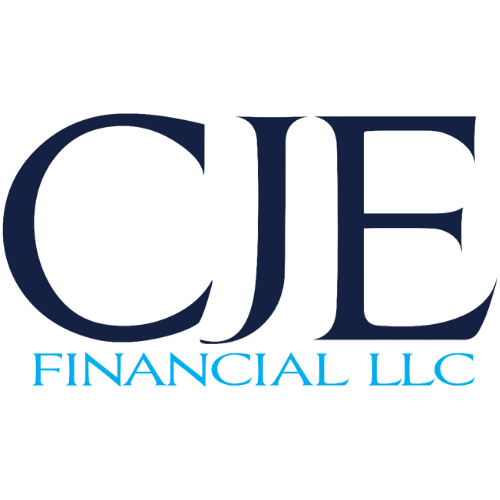End-of-Year Tax Strategies: How to Optimize Your Portfolio with Tax Loss Harvesting
According to Forbes, researchers at MIT and Chapman University calculated that “tax loss harvesting yielded almost an additional 1% annual return each year from 1928 to 2018.” (1)
As the year begins to draw to a close, it's time to review your investment portfolio and consider strategies that can enhance your financial position for the upcoming year.
What is Tax Loss Harvesting?
Tax-loss harvesting is a strategy that involves selling investments that have declined in value, replacing them with similar investments, and then offsetting realized investment gains with those losses. (2)
By realizing these losses, you may be able to reduce the amount of capital gains tax you owe. Essentially, this strategy allows you to pay taxes only on your net profit—the amount gained minus the losses realized.
At its core, the strategy is fairly straightforward: If you have an investment that has lost value, selling it can generate a capital loss. This loss can then be used to counterbalance any gains you've realized from other investments.
While investors can benefit from harvesting losses any time, down markets may offer even greater opportunities to realize losses and use sale proceeds to purchase other securities. Beyond that, new investments may enhance your portfolio performance as the market recovers. (1)
Why You Should Consider Tax Loss Harvesting for End-of-Year Planning
Although tax loss harvesting can be beneficial throughout the year, the end of the year could provide a unique opportunity to optimize your tax situation, as tax-loss harvesting can serve as an effective tool for reducing your overall taxes.
A security could be sold to show as a loss on your financial statements. The loss would then be counted against the sale of a security that was sold at a profit. (3)
Sales transactions must be completed before the end of the tax year. (1) For example, if you want to harvest losses from 2024, the transactions must be completed by December 31, 2024.
Keep in mind that when you sell an investment asset for a profit, you owe capital gains taxes on the profits based on how long you held the asset.
If you owned it for less than a year, you’ll pay your normal income tax rate on any gains. If you hold it for more than a year, you’ll owe the preferential long-term capital gains rate, which could be as low as 0% but won’t exceed 20%. (1)
It’s important to note that the long-term capital gains rate is determined by a client’s income tax rate. The rate is not arbitrary, but based on specific factors that will vary between individuals.
Two Potential Benefits of Tax Loss Harvesting
Offsetting Investment Gains: The primary benefit of tax loss harvesting is the potential to offset gains. For example, if you’ve realized significant gains in some investments, selling underperforming assets at a loss can help reduce the taxable amount of those gains.
Reducing Taxable Income: If your capital losses exceed your gains, you could use up to $3,000 of those losses to offset ordinary income on your tax return ($1,500 if married and filing separately). Any remaining losses can be carried forward to future years. (2)
As always, consult with your CPA or tax preparer for clarification and confirmation of these benefits to your specific tax return.
Maintaining the Balance of Your Portfolio
When you sell an asset at a loss, it can disrupt the balance of your portfolio. To maintain your investment strategy, consider replacing the sold asset with a similar investment to help ensure that your portfolio's asset mix, risk, and return expectations remain aligned with your financial goals. (3)
When looking for tax-loss selling candidates, focus on investments that no longer fit your strategy, have poor growth prospects, or can be easily replaced. Short-term losses have the potential to be particularly valuable because they offset short-term gains, which are taxed at higher rates. (2)
Navigating Wash Sale Rules
Be mindful of the wash sale rule when implementing tax loss harvesting. This rule prevents you from claiming a tax deduction on a loss if you repurchase the same or substantially identical securities within 30 days before or after the sale. However, you can still invest in similar securities within the same industry or choose alternative investments that align with your strategy.
The wash sale rule does not, however, preclude purchasing securities in the same industry. Alternatively, you could choose to invest in an industry-specific exchange-traded fund (ETF) or mutual fund that better fits your investment strategy. (1)
Closing Thoughts
Tax loss harvesting can be a strategic way to reduce your tax liability and enhance your investment returns. Even if you don't currently have gains to offset, harvesting losses can provide future benefits, including reducing ordinary income or offsetting gains in future years. Keep in mind that it’s best to discuss all tax-related plans with your CPA or tax preparer prior to implementing a strategy with the intent of effecting your tax return.
Remember this saying: Don't let the tax tail wag the investment dog. It's important to ensure that tax considerations do not compromise your overall investment strategy. A balanced approach and regular portfolio review are key to aligning your investments with your financial goals.
If you have questions about how to effectively implement tax loss harvesting or need personalized advice tailored to your situation, our team is here to help. Contact us today to schedule a consultation and make the most of this year-end planning opportunity.
Article Sources:
(1) Baldridge, Rebecca. “Can Tax Loss Harvesting Improve Your Investing Returns?” Forbes, Nov. 14, 2023.
(2) Fidelity Viewpoints. “How to Cut Investment Taxes.” Fidelity, Dec. 5, 2023.
(3) Kagan, Julia. “Tax Loss Harvesting: Definition and Example.” Investopedia, Feb. 28, 2024.
CJE Financial, LLC provides investment advisory services through Key Client Fiduciary Advisors, “Key Client”, an SEC registered investment adviser.
Key Client does not accept orders and/or instructions regarding your account by e-mail, voice mail, fax or any alternate non-verbal method. Transactional details do not supersede normal trade confirmations or statements. This material is intended for informational purposes only and should not be construed as legal, financial, tax, investment, or other advice. All content related to this material is information of a general nature and does not address the circumstances of any specific individual or entity. If you receive this message in error, please contact the sender immediately and delete the material from your computer.

